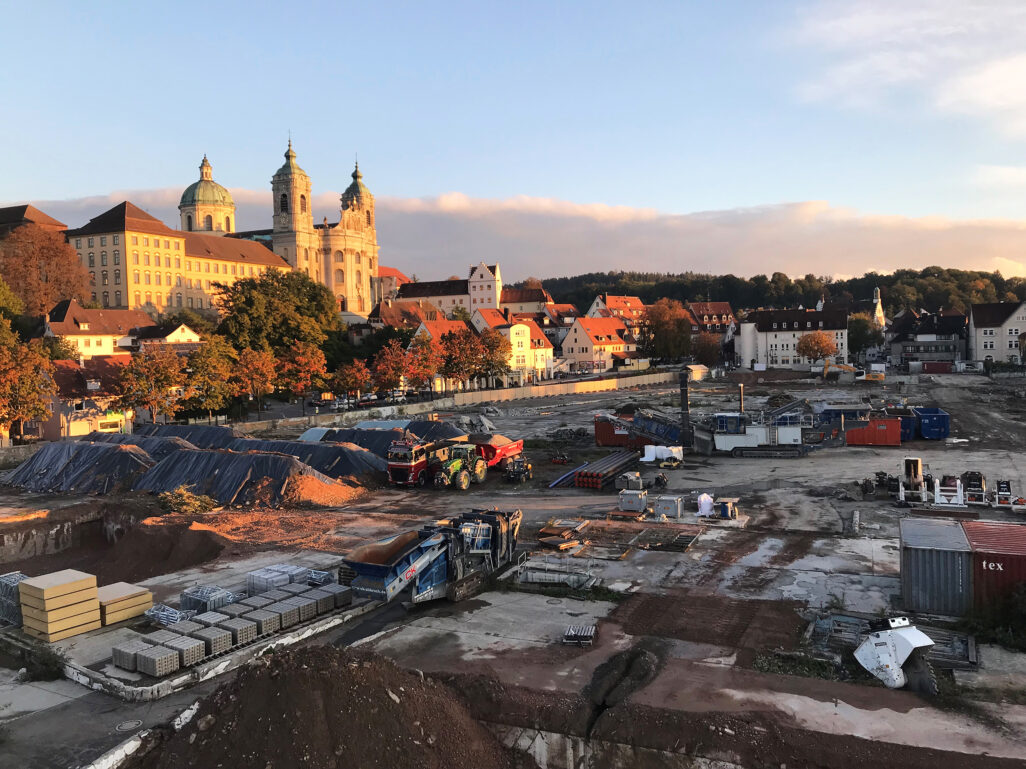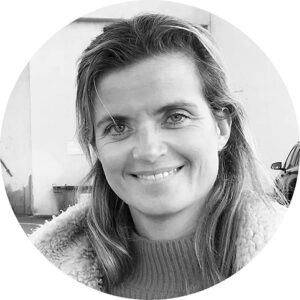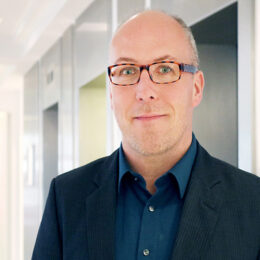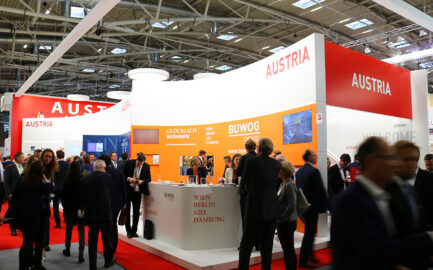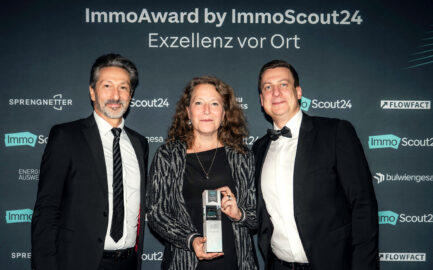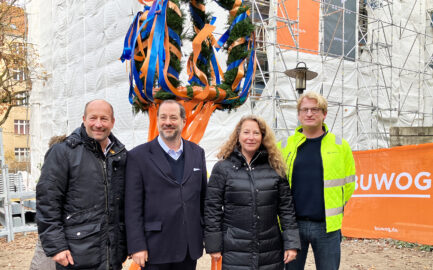Transparent information and dialogue with the local residents are the be-all and end-all for new construction projects. What’s being built? When will the excavators begin running? What will the new development look like? An information event for the Martinshöfe project in the Ravensburg district provided information concerning numerous questions.
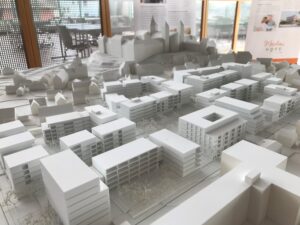
A good 130 interested buyers and tenants gathered for the information event in the Schuler canteen in Weingarten. The town in the Ravensburg district, known for its magnificent basilica, has around 24,000 inhabitants. And: a large, old industrial site directly in the city centre – an area that is both an opportunity and a challenge. With Martinshöfe, a new, urban and sustainable development for every generation will be created here in the next few years.
Large information boards report on the history of the site and illustrate building plans and visualisations of the new development as well as the sustainable qualities of the future Martinshöfe: rainwater will be infiltrated on the property, there will be photovoltaics on the rooftops, while green rooftops and a sustainable mobility concept are also planned, as is geothermal energy as a particularly resource-saving source of energy.
At the information event, citizens were also quite interested in the timing of the construction work. Many can look directly at the large construction site from their neighbourhood or office and follow what is happening. “The machines have already been on site for a few months and are busy preparing the site,” says Roman Steindl, who is planning and supervising the work as BUWOG’s project manager. There is a lot to do on the 3.7-hectare former Schuler site before construction of the new buildings can even begin.
Metre-thick foundation from the industrial era
The former factory site had been used industrially since 1866, most recently as the location for a large press and machine factory. “Metre-thick foundations that are in the ground here date back to that time,” Steindl explains. The foundations are currently being demolished and removed with special equipment. At the information event, the demolition specialists showed exactly how this works in two technical demonstrations that could be observed at a safe distance from the terrace of the Schuler canteen.
In the process, the foundations are deliberately not blasted or crushed, but – as quietly and with as little dust as possible – cut into small pieces using concrete saws and then transported away. Despite all the care taken, however, noise and dirt from the construction site can only be reduced, not prevented. BUWOG voluntarily refrains from demolition work on Saturdays and limits the construction site hours to Mondays to Fridays from 7 am to 6 pm. “As a result, everything will take a little longer and will also be more expensive, but of course we understand the need for peace and quiet for the people surrounding the construction site and are adapting to this as best we can,” Steindl says.
“Part of good communication is being honest and transparent and clearly stating that it will be noisy and dusty.”
BUWOG also provides residents with an ombudsperson’s office that takes up concerns in cases of hardship and tries to work out a sensible solution with the project team. This ombudsperson’s office is headed by architect Anais Cosneau and her team from “Stadtdialog”, which specialises in communication in sensitive building projects. “Part of good communication is being honest and transparent and clearly stating that it will be noisy and dusty. Neither can be prevented because the foundations have to come out of the ground and the soil has to be decontaminated,” the ombudsperson explains. Good communication also includes a clear statement: “We have to make up today for what previous generations failed to do,” the ombudsperson says.
Currently, the construction sites are being cleared and the foundations of the former industrial site are being demolished. The first construction measures will begin as early as 2023, starting with comprehensive soil remediation in order to remove contamination stemming from the site’s previous industrial use. “It is important that we have a clear goal in mind and, with Martinshöfe, a beautiful neighbourhood development that is worth working for.”
Around 500 new apartments in an open neighbourhood development

At Martinshöfe, a total of 500 apartments are being built in seven sub-projects with apartment sizes ranging from one to five rooms, which are aimed at various target and age groups. This is an order of magnitude that BUWOG can handle well as a developer, according to Andreas Barth, the managing director responsible for the southwest: “BUWOG is a successful nationwide developer with many years of experience in neighbourhood development that has already completed around 60,000 apartments internationally. What counts for us is the needs of the local people – and this is also the case here in Weingarten.”
Jens Herbst, director of the Department of Planning and Building of the city of Weingarten, describes the development as an “opportunity for Weingarten and one of the most important urban development projects.” As a municipal representative, he supported the information event day and was also personally available for questions and discussions with the residents.
The majority of the new apartments are planned as rentals. A comprehensive social concept and services for older people enhance the qualities of the development. The architecture and design of the new development was also viewed with interest at the information event. “The rather small-scale building structure with varying façades is derived from the existing buildings in the adjacent old town,” says Maria Wechsel, who has been familiar with the project for years and lives in the region herself. As project manager of the previous owner of the property, i+R Group, she was involved in the conception and design of the plans. “There are also attractive and leafy open spaces, a footpath to the city centre and space for gastronomy and commerce in the heart of Weingarten,” Wechsel says.
Patience is necessary until everything’s ready. And good communication if there’s a “clash”.
After the information event, the Stadtdialog team will continue to be available for residents’ concerns, by phone at 0157 / 348 787 90, by email at stadtdialog@cosneau.de and at the regular on-site consultation hours.
The next in-person consultation period will take place on 10 October 2022 from 1 to 5 pm. The Stadtdialog team can be found in the ombudsperson’s office on the third floor of the Schuler canteen. Telephone office hours and additional information can be found on the developer’s communication page: www.martinshoefe.com.
On the communication page, you can also keep track of the progress in construction and find out more information about the Martinshöfe project.
“It is important that we have a clear goal in mind and, with Martinshöfe, a beautiful neighbourhood development that is worth working for.”
This could also be interesting:
- Sustainable from the very beginning: BUWOG NEUE MITTE SCHÖNEFELD
- 70 Years of BUWOG: Sustainable building and living
- Smart innovations: 70 years of BUWOG for greater sustainability and quality of life
Film from the information day:

